Sealife guideExplore the diversity and secrets of bony fish in our oceansMarine vertebrates
Last updated on 08/13/2025 at 11:50 PM
Classification
The class of Osteichthyans includes all fish that have a bony skeleton, as opposed to fish with a cartilaginous skeleton, such as sharks and rays.
The class of Osteichthyans is divided into several subclasses. The most prominent is the Actinopterygians, which includes ray-finned fish. The other subclasses include fossil species as well as a few living species, such as the coelacanth, which lives at great depths.
Description

Anatomy of bony fish
To move through water and navigate in all directions, fish have a variety of fins, some of which appear in pairs on either side of the body. Each position has a specific fin name:
- The caudal fin, more commonly called the tail, is symmetrical in shape and provides most of the propulsion for the fish to move at high speed.
- The pectoral fins appear in pairs on either side of the fish's body. They are primarily used for maneuvering.
- The pelvic fins, also called ventral fins, appear in pairs on the underside of the fish's body.
- The dorsal fins, which can number one or two depending on the species, are located along the dorsal side of the fish. They help stabilize the fish in the water.
- The anal fin is located on the ventral side of the fish's body just behind the anus. Opposite to the dorsal fins, it serves a similar stabilizing function.
Fish have a respiratory system made up of gills through which water flows. Water enters through the mouth and exits behind the head on either side of the body through a single gill slit, called a gill opening.
Diet
Fish are mainly carnivorous, but some species are herbivorous or even sponge-eating.
Observation tips
Fish perceive their environment visually through their eyes. But be aware, they can also detect waves traveling through the water using their lateral line, which runs along the length of their body. This means your presence might be detected before you even enter their field of view! To approach fish, position yourself as far downstream as possible.
Did you know ?
The sailfish is the fastest fish in the world, reaching speeds of about 68 mph, closely followed by the swordfish.
Discover bony fish
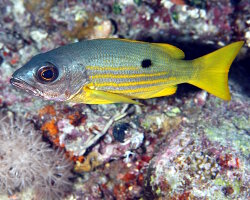
Blackspot snapper
(Lutjanus ehrenbergii)
(Lutjanus ehrenbergii)

Graysby
(Cephalopholis cruentata)
(Cephalopholis cruentata)

Ocellated frogfish
(Fowlerichthys ocellatus)
(Fowlerichthys ocellatus)
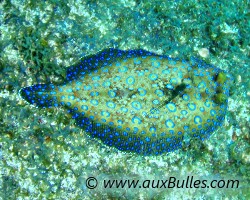
Peacock flounder
(Bothus lunatus)
(Bothus lunatus)

Reticulate stargazer
(Dactyloscopus foraminosus)
(Dactyloscopus foraminosus)
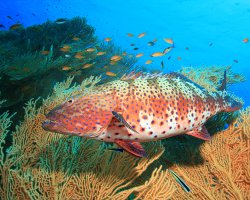
Roving coral grouper
(Plectropomus pessuliferus)
(Plectropomus pessuliferus)
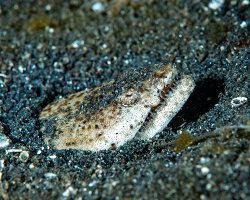
Stargazer snake eel
(Brachysomophis cirrocheilos)
(Brachysomophis cirrocheilos)

Yellowtail wrasse
(Anampses meleagrides)
(Anampses meleagrides)
Our latestUpdates
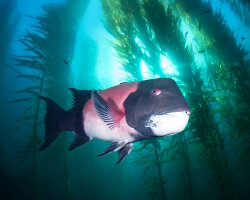
Thursday, October 2nd 2025
The California sheephead
Discover the California sheephead, a colorful fish of the eastern Pacific. Learn about its appearance, diet, habitat in kelp forests, unique sex-changing ability and role in marine ecosystems.

Monday, September 29th 2025
The banded guitarfish
Discover the banded guitarfish, a benthic eastern Pacific species with unique camouflage, living on sandy and rocky bottoms.
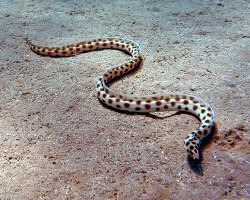
Thursday, September 25th 2025
The tiger snake eel
Explore the tiger snake eel (Myrichthys maculosus), featuring a creamy to pale yellow body dotted with black spots, and learn about its habitat, behavior and role in coral reef ecosystems.
Photo of the Day

Salmacine
(Filograna implexa)
(Filograna implexa)
